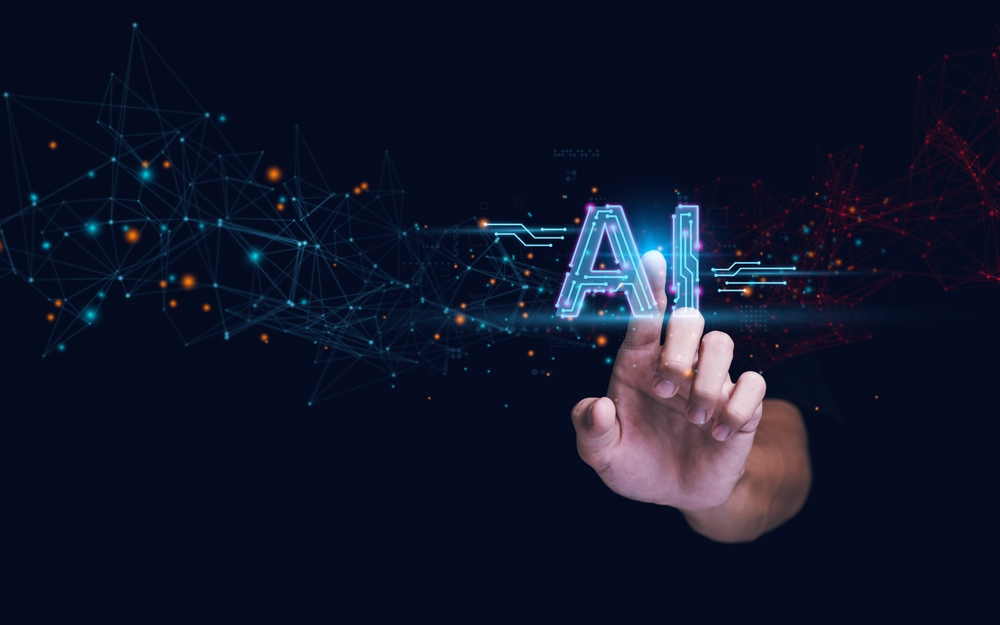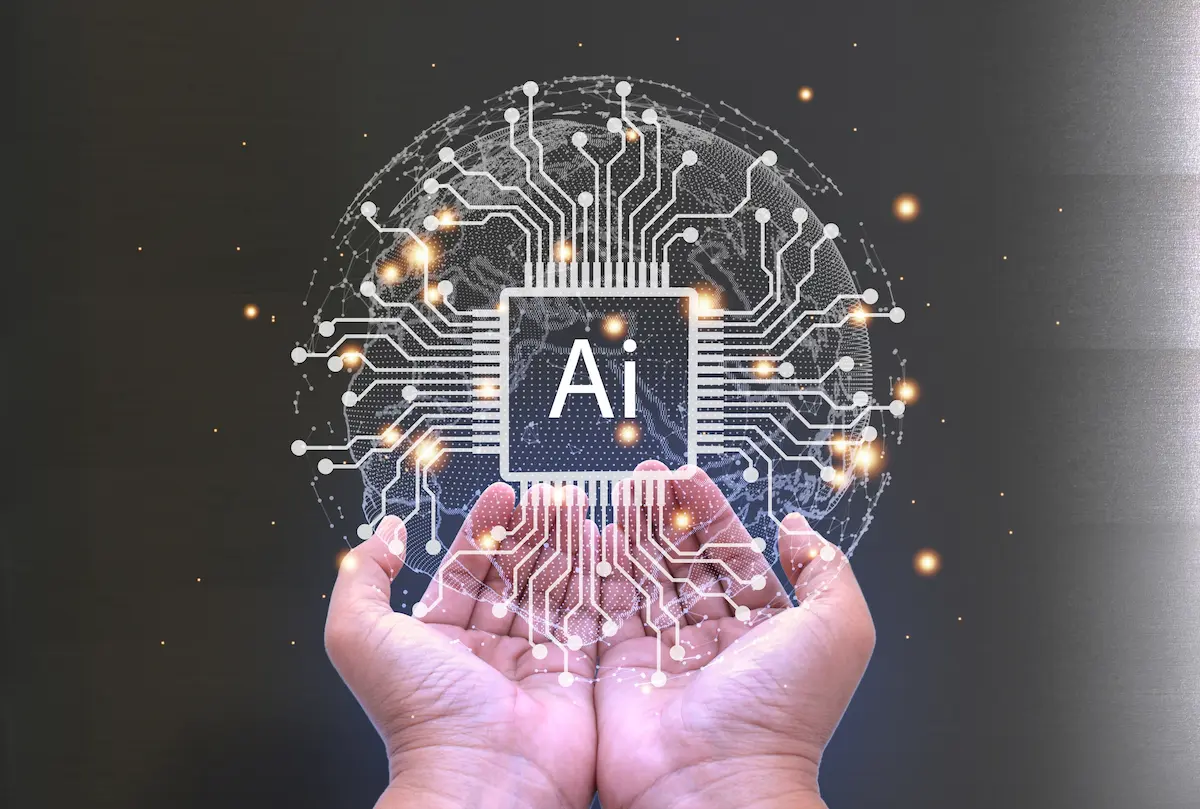Article Contents
1. Understanding AI Programming
2. Popular AI Programming Languages
3. Getting Started with AI Programming
4. The Future of AI Programming
INDUSTRY TRENDS & EMERGING TECHNOLOGIES
Learn about AI programming with our in-depth article. Explore the impact of AI on programming, and the software development industry. Dive in now!

1. Understanding AI Programming
2. Popular AI Programming Languages
3. Getting Started with AI Programming
4. The Future of AI Programming
For both enthusiasts and professionals, AI technology has revolutionized activities within the digital universe. Things will never be the same. The word "crisis" might best describe this transformation, as every crisis brings opportunities and losses.
Among all sectors, programming is particularly impacted by artificial intelligence. AI is altering how code is written and designed across different languages, and many analysts believe it is democratizing the field. Amateurs, beginners, and even those previously unrelated to coding can now create web pages or apps using AI tools.
What is happening to programming today mirrors the evolution of photography a few decades ago. In the 1970s, photographers were specialized technicians and artists who needed to understand key variables like light, composition, and framing.
They also had to master their cameras, adjusting speed and shutter settings, with only 20 to 36 shots per film and a day or more to develop each roll. Over time, cameras became digital and more automated, evolving into smaller, lighter, faster, and easier-to-use devices. Now, full-screen 4K photos can be taken with a cellphone.
Photography has transformed dramatically from what it was in the 70s. There are more pictures than ever, with higher quality and numerous post-production options. However, photographs have also become less unique. The ease and accessibility of digital photography have led to an explosion of images, making each individual photo less special.
Conversely, code is becoming more complex each day. The digital demand for programs that integrate increasing amounts of data and execute longer, more intricate processes is continually growing. However, programmers are limited by their physical capabilities and energy.
The traditional method of spending hours writing instructions is gradually becoming obsolete. AI now offers a variety of tools to enhance efficiency, capacity, accessibility, and speed in programming, whether for an app, a web page, or robotics.
Yet, AI programming has unresolved limitations, both technical and ethical. Technically, AI-generated code can introduce new vulnerabilities and bugs that may be challenging to detect and fix; translate a code from one programming language to another, or even transform and English instruction to a program.
Moreover, as AI systems learn from existing codebases, they can inadvertently perpetuate existing biases or inefficient practices. Ethical concerns also arise, such as the potential for AI to displace human programmers or the risks of creating autonomous systems without adequate oversight.
Similarly, as AI democratizes programming, the unique craftsmanship of hand-coded software may diminish. While the volume and diversity of software applications will increase, the distinctiveness and innovation of human-driven programming could be at risk. Nevertheless, AI integration into coding opens up exciting possibilities for creativity and problem-solving, allowing us to tackle more complex challenges than ever before.
In this article, we will explore what AI means for programming, highlighting its benefits and limitations for the sector. We will also suggest some tools and training resources to help you navigate this new landscape. Finally, we will examine the ongoing discussions about the future of AI in programming.

IBM explains that AI programming relies on three main components: vast amounts of data, AI algorithms, and massive computing power. Data is essential for training, validating, and testing AI tools, such as machine learning or generative AI. To handle these tasks, a powerful source capable of sustaining millions of processes per second is required.
This combination offers capabilities that traditional programming cannot match. The key advantage is that AI is far more efficient and faster at coding than humans. This was demonstrated as early as 1996 when Russian chess champion Garry Kasparov was defeated by Deep Blue, one of IBM's pioneering experiments in artificial intelligence.
After hours of play, Kasparov was exhausted, nervous, and discouraged, while Deep Blue continued to calculate optimal strategies using pure mathematics, a method known in computing as brute force. In traditional programming, human operators design code with finite variables within a limited scope. AI, however, expands these possibilities by continually generating new code.
Rather than needing a programmer to add responses, security measures, or conduct tests, an AI assistant can perform these tasks in real-time. AI can also interpret vast amounts of data in various formats, such as images, videos, or audio, and translate it from one language to another; from English to code, and also from one programming language to another.
This is possible especially because of the advancement in Natural Language Processing, Deep Learning algorithms, and Large Language Models. However, this also introduces challenges, including issues with stability, transparency, and control.
AI programming is often described as a black box. We may not fully understand what is happening inside, but we know it is constantly evolving as new code is generated every second. When an error or unexpected result occurs, pinpointing the mistake within thousands of lines of code is difficult. This lack of traceability makes AI programming hard to control, raising significant concerns among developers who are actively seeking ways to enhance clarity and transparency for users.
Despite these challenges, a key development in AI coding could transform how people engage with programming: the rise of low-code and no-code development platforms. Specialized generative AI tools like IBM Watsonx Code Assistant, GitHub Copilot, and TabNine, as well as general generative AI like ChatGPT and Google Bard, dominate several programming languages. Depending on the complexity required, amateur programmers or even non-technical users can delve into coding with confidence, knowing there is an AI tool to support their digital journey.

AI programming could be developed in almost all popular languages. Knowing what language is best for what we want to do is essential to be more efficient in our work. Here you have a quick analysis of some of them.
This language stands at the forefront of AI programming due to its ease of use, readability, platform independence, and large, active community. Its extensive library ecosystem, tailored for AI and machine learning, coupled with strong data handling and visualization capabilities, makes it ideal for a wide range of AI projects, from data analysis to deep learning.
This is another prominent AI programming language, particularly strong in handling large datasets and supporting various AI processes such as exploratory data analysis, data manipulation, feature engineering, and predictive model creation. R's extensive package collection aids in diverse AI software development tasks.
C++, one of the oldest programming languages, remains a robust option for AI development. Known for its flexibility, speed, and efficiency, C++ is well-suited for data-heavy and computationally intensive tasks. Its granular memory management control makes it a preferred choice for embedded systems and real-time applications where efficiency is crucial.
It is a newer language in AI programming that combines ease of use with speed. It features user-friendly syntax similar to Python but benefits from being a compiled language, making it faster, especially with large datasets typical in AI. Julia excels in predictive modeling, deep learning, and neural networks.
Java, widely used in mobile app development, also plays a significant role in AI programming. It is known for its performance, security, and ease of debugging. Java’s platform independence and compatibility with TensorFlow, along with its extensive libraries and frameworks, make it suitable for developing neural networks, machine learning applications, and predictive artificial intelligence analytics.
If you're looking to enhance your team's Java capabilities, read this to discover why outsourcing Java development services is your best option.

Using AI tools for programming varies in difficulty depending on the project's complexity and the type of assistance required. To determine the appropriate approach, consider two key questions: What do I need? and How much do I know about coding?
Based on these answers, you can choose between general or specific low-code and no-code development platforms. For simpler tasks, you might use a platform to specify the desired product, while for more complex tasks, you may need a tool to debug or test your code. The complexity of the process dictates the type of tool you should use. For instance, if you want to program a simple Java Ping-Pong game, you could ask ChatGPT or Bard for assistance.
However, for more complex tasks, such as debugging a stock market analysis program or analyzing vegetation cover using satellite images, general AI tools may not suffice. In such cases, specialized AI programming tools like IBM Watsonx Code Assistant, GitHub Copilot, and TabNine are more suitable, though they require some level of AI knowledge.
To navigate the AI landscape, hackr.io ranks various free and paid courses for 2024 to enhance your understanding and skills in AI:
Artificial Intelligence Professional Program from Stanford: This online program covers modern AI fields, including machine learning, reinforcement learning, neural networks, and natural language processing. Taught by renowned Stanford faculty, the courses are adapted for working professionals and require intermediate knowledge in Python, calculus, algebra, and probability. The cost is around USD $1750, with a time commitment of 10-15 hours per week for 10 weeks.
Artificial Intelligence A-Z: This course provides an in-depth understanding of AI, covering key areas such as machine learning, data science, and deep learning. It teaches how to control advanced AI models, build virtual self-driving cars, and develop AI programming skills. Participants can leverage their AI knowledge to design and market real-world applications and pursue careers in advanced AI programming. The course lasts 16 hours and 30 minutes and costs around USD $130.
Artificial Intelligence Certification Program by Stanford University: Perfect for computer programming and software engineering students, this course offers an AI certification upon completion. Taught by Professor Andrew Ng, the curriculum covers essential AI topics like machine learning, knowledge representation, robotics, natural language processing, and visual learning. The course admits individuals with a bachelor's degree and advanced knowledge in statistics, linear algebra, and programming languages such as C++, Java, or Python.
AI for Everyone by Coursera: Offered by deeplearning.ai and taught by Professor Andrew Ng, this course is among the best online AI courses and provides certification upon completion. It covers machine learning functions and both technical and non-technical aspects of deep learning, with short quizzes to help grasp new concepts. It is a beginner course with no prerequisites and is free.
IBM Applied AI Certification Course by Coursera: This comprehensive course teaches participants to use Python to create AI-powered virtual assistants and chatbots and covers neural networks, machine learning, and deep learning. The curriculum includes minimal coding techniques with APIs, Python, and IBM’s Watson AI service and covers virtual assistants, chatbots, and vision techniques for design and classification models. By the end of the course, learners will have an in-depth understanding of AI and can pursue careers in Data Science, AI generation, and machine responding. The course requires a four-hour weekly commitment for seven months and has no prerequisites.

When discussing AI and its promising future, it's not uncommon to feel uncertain about its potential outcomes: a revolutionary advancement for humanity or rapid destruction at the hands of machines. Between these extremes, numerous shades of possibilities are being discussed.
Two primary concerns are the potential bias in AI algorithms and job displacement. The first concern is that AI algorithms trained on biased data can create a chain reaction: biased data produces biased results, reinforcing existing biases in the developed software. This can lead to discriminatory practices or unfair decision-making in various sectors such as healthcare, applicant tracking systems, online advertising, image generation, and predictive policing tools.
The second concern, job displacement, is particularly challenging. The tech industry is undergoing massive changes with the introduction of AI programming tools, raising fears among programmers about job loss and income reduction. Rick Spair, a technology and business author and communicator, emphasizes the importance of companies and programmers considering this impact when integrating AI into their workflows.
Spair also highlights an area where AI still falls short: human creativity. Humans solve riddles, puzzles, and projects through complex thought processes that go beyond brute force and immense computational power. Even John von Neumann, one of the greatest minds of the 20th century and a pioneer of artificial intelligence and computing, couldn't fully grasp this complexity.
Spair states, “Programmers should embrace AI as a tool that complements their creativity and enhances their productivity. By leveraging AI to automate mundane tasks, programmers can focus on more complex and creative aspects of programming, such as designing novel algorithms, creating intuitive user experiences, or developing innovative applications.”
It's time to explore the top software technologies to enhance your project with more insights from Jalasoft!